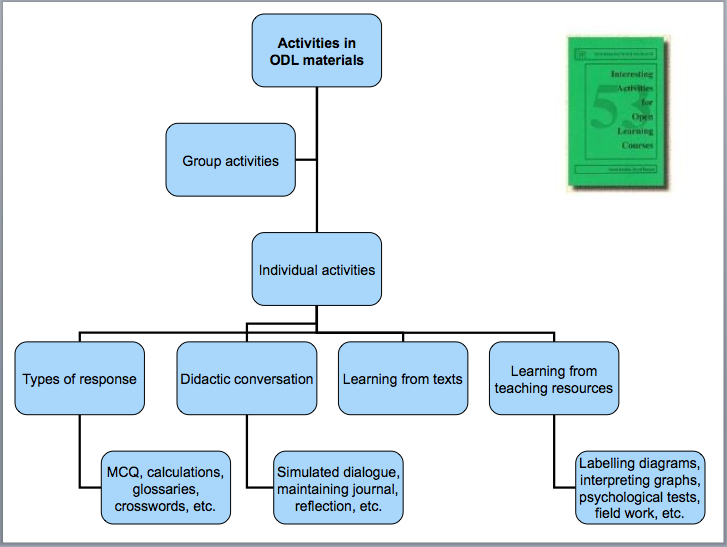When designing materials for both open and online learning courses, I’ve always been especially interested in the activities. They allow for creativity, at the same time offering the challenge to ensure that they will engage learners. This is important, as research and evaluation continue to affirm , if irrelevant or simply boring, activities will not be attempted.

Click above or on the title in the text to download the PDF version of the book. It’s just over 4MB.
One outcome of this interest was the publishing of a book devoted to the topic, 53 Interesting Activities for Open Learning Courses, produced back in the 1990s by David Kember and myself. Our book was part of a series comprising 53 Interesting Things to do in Your Lectures, 53 Interesting Ways to Assess Your Students, 53 Interesting ways to Appraise Your Teaching, and so on.
We wanted it to be a practical guide, and I’ve used it as an ideas generator for staff development workshops aimed at helping staff to design open learning materials. I had it with me when running workshops at Wawasan Open University earlier this year, and was highly gratified when one of the participants very kindly scanned it to make it available as a PDF file. As far as I know it is no longer published (in fact I can’t find the publisher online – they were a small outfit), so am happy to make it freely available. If anyone with any claim on it has any reasonable objection (David Kember seems to have disappeared from Hong Kong, I guess he’s retired like me), let me know and I’ll take it down.
David and I had both accumulated collections of student activities over the years (from a variety of institutions), and were easily able to come up with the required 53 types – the challenge was how to organise them in a logical order. It took a while but we got there. Starting by dividing them into two categories, individual and group activities, we were then able to discriminate more finely, as shown in the diagrams below:

This shows how the individual activities were categorised. Note the term ‘didactic conversation’, an old favourite of Borje Holmberg’s which seems to have fallen out of use.

This shows how we categorised the group activities. There were 19 types of group and 34 types of individual activities.
As well as a general introduction to the book and brief outlines of the sections, for each type activity we discussed its merits and provided at least one example. To illustrate, here’s one of the shorter ones, chapter 16:
I’d been thinking in recent years of updating it for online learning, but figure that anyone with a modicum of common sense would easily apply any relevant ODL activity to the online environment.
So there it is – help yourself to it if you’re interested. It’s my miniscule contribution to the open access movement.

